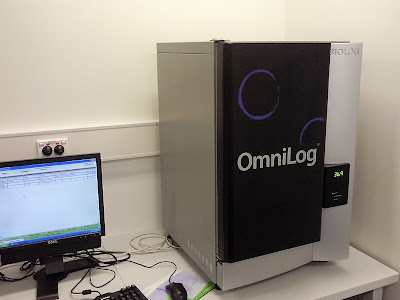Scary how fast time goes, but I have now been at Macquarie University for five years. It seems like just yesterday I was faced with the decision of whether or not to move from the
J Craig Venter Institute in the US back to Macquarie University in Australia. This was not an easy decision, I had been in the US for twelve years, including the last 7 and a half years at
The Institute for Genomic Research/J Craig Venter Institute. So, it was a significant upheaval to move back to Australia.
There were significant risks in this move, I wasn't certain whether the style of genomic research I was interested in would be fundable by granting agencies in Australia; I had never held a teaching position in a university, so I really didn't know how the teaching aspect would go and whether I would enjoy it; I wasn't able to convince any of my staff in the US to relocate to Australia with me, so I had to build a new research group from scratch. Here I must give a huge thank you to Sasha Tetu, who was my first employee here at Macquarie and played a critical role in getting the group up and running. Karl Hassan and Liam Elbourne who joined us later, also played important roles in establishing the research group.
So why did I move to MQ? If I was ever go to move back to Australia, the timing seemed right from both a professional and personal standpoint. The advent of next generation sequencing instruments meant that I no longer needed to be in only one of the few genome sequencing institutes in the world in order to undertake genomic research. I was offered a tenured full professorship (the holy grail of academia) which looked very attractive after seven and a half years of stress in attracting 100% grant funding for my position and my group's research at TIGR/JCVI. One of Macquarie's research strengths was in proteomics, with the
Australian Proteome Analysis Facility (APAF) located here along with many proteomics researchers (Indeed the term "proteome" was coined by Marc Wilkins, a PhD student at Macquarie in the early 90s) . I had zero expertise in proteomics, but I was interested in using it to complement my genomics/transcriptomics research, so that seemed a good match. Macquarie was also a leader in the study of mobile DNA elements- pieces of DNA that can "jump" from one organism to another. One class of mobile elements known as
integrons had been discovered by Hatch Stokes at Macquarie and by Ruth Hall at CSIRO. One of my main research interests is how bacteria exchange mobile pieces of DNA in a process known as lateral gene transfer, and how this ability to exchange genes may allow bacteria to adapt to new environmental conditions. This also seemed to be a good match in terms of research interests.
Curiously, when I first arrived at Macquarie, I seriously considered starting a blog about my experiences in starting afresh here. I had been inspired by my friend Jonathan Eisen's
Phylogenomics blog. But at the time, I wasn't sure I would be able to sustain a regular blog while getting established here at MQ, and so decided against it. It was only this year that I revisited that decision and with the promised help of my research group decided to start a Paulsen Lab Blog.
 |
| Garry Myers and I shared a bottle of Grange to celebrate my professorial appointment (can't find the actual photos of that event so took this from the web) |













































